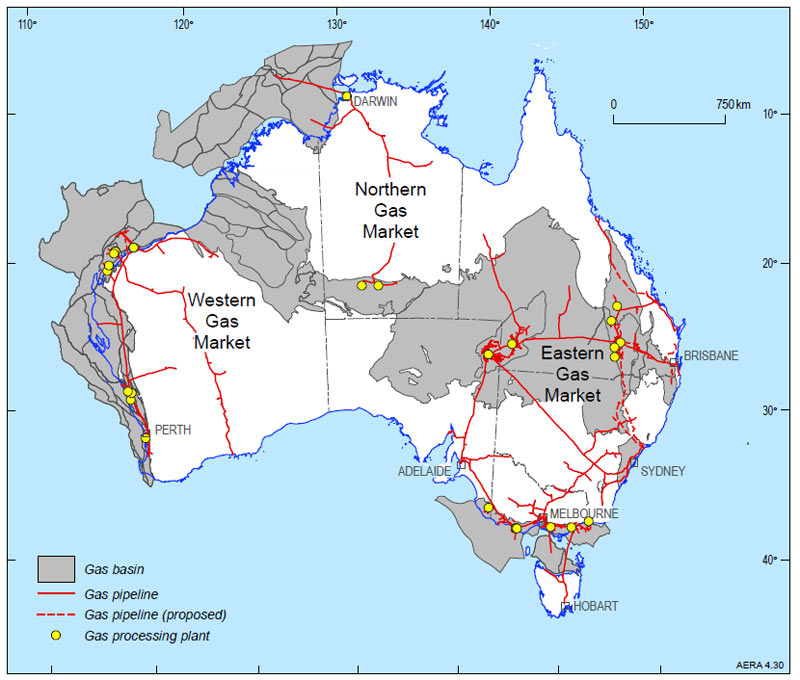Gas
Last updated:27 June 2014
Natural gas is a combustible mixture of hydrocarbon gases. It consists mainly of methane (CH4), with varying levels of heavier hydrocarbons and other gases such as carbon dioxide. Natural gas is formed by the alteration of organic matter. This can be by biogenic or thermogenic processes. When accumulated in a subsurface reservoir that can be readily produced it is known as conventional gas.
Conventional gases (gas) fields can be dry (almost pure methane) or wet (associated with the “wet gas” components – ethane, propane, butanes and condensate). Dry gas has less energy content than wet gas. Conventional gas can also be found with oil in oil fields. Natural gas also occurs in more difficult to extract unconventional deposits, such as coal beds (coal seam gas), or in shales (shale gas), low quality reservoirs (tight gas), or as gas hydrates.
Liquid Natural Gas (LNG) is primarily composed of the lightest hydrocarbons, methane (CH4) and ethane (C2H6); it is a gas at surface conditions but is cooled and compressed to a liquid for transport in LNG tankers to export markets. LNG is natural gas that is cooled to around -160oC until it forms a liquid, making it easier to transport.
Australia has significant gas resources, with gas being Australia’s third largest energy resource after coal and uranium. Conventional gas resources are widespread both on and offshore, occurring in fourteen different basins, but most of the resource is off the north-west margin in the Bonaparte, Browse and Carnarvon basins.
